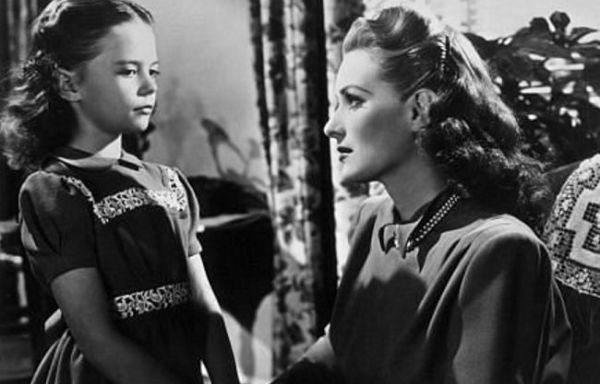Was “Miracle on 34th Street” unusually pro-woman for 1947?
Is Miracle on 34th Street (1947) a feminist film? The term “feminism” is thrown around a lot these days, with various people will providing various interpretations of its meaning. By feminism’s basic definition of “the advocacy of women’s rights on the grounds of political, social, and economic equality to men,” Miracle on 34th Street does advocate a lot of pro-woman themes that were extremely uncommon in 1947.
It is initially surprising that the film’s central character, Doris Walker (Maureen O’Hara) is a divorcee. 1947 was high time for the Hays code, and the sacred act of matrimony was to be revered. Relationships outside the bonds of marriage were to be presented as inadequate and unappealing. Yet Doris, astonishingly singular in presence, self-sufficient and capable, is operating in Miracle on 34th Street without a husband or the desire to find a new one. She has an executive-level job with her own office at Macy’s, amongst a collaborative of male peers, for which she is so qualified she is single-handedly responsible for coordinating the company’s Thanksgiving Day parade and seemingly brings home enough income to support life in a Central Park West apartment. Her co-workers treat her with the same respect and authority as they do each other, completely oblivious to her gender. The film provides no explanation for how Doris has this high-level career, nor does it feel the need to provide justification. It’s simply the way things are. She’s given a bonus for her good ideas and commended as any executive should be, without any objectification by her superiors or peers. All of this gender equality attributed to a single mother, in 1947, is incredibly rare and forward.
Doris’ ex-husband is identified as a useless man for which Doris holds great contempt, and her daughter Susan (Natalie Wood) hasn’t seen him since the split. She mirrors her mother in personality and perspective as an intelligent and inquisitive child. Her character reinforces the pro-woman stance of the picture, and couples it with a pro-child attitude that doesn’t find the need to dumb anything down for its leading youngster.

When the male protagonist swoops in, attorney and neighbor Fred Gailey (John Payne), his role is to assist Doris domestically. He watches Susan, makes coffee, and even wears an apron when working in the kitchen. Many movies of the era would have turned Doris into an emotionally unstable or suffering character which Gailey would ultimately be responsible for saving. Instead, Doris’ chief personality flaw is her extreme practicality, something to which she is committed enough to diminish her own child’s imagination in fear of her building the world up into something it isn’t. Much of this “grounded in reality” lifestyle does stem from Doris’ failed marriage, but it only weakened her insomuch as it has heightened her strength and independence, and subsequently Susan’s. Because of Doris’ resilient ability to cope, the Legion of Decency took some offense to the film as “reflecting the acceptability of divorce.”
When the film reaches its conclusion and Doris and Fred see the For Sale sign on Susan’s dream house, they don’t set up marriage plans or talk of building a life with more children as one would expect in a 1947 film. Instead, they simply suggest they could buy the place and live there together.
Gailey, along with Kris Kringle (Edmund Gwenn) spend the film teaching Doris (and Susan) the value of imagination and belief in life’s “lovely intangibles.” They suggest that not everything can be left to rational decision-making or facts; sometimes heart is what counts. Gailey and Kringle merely enrich Doris’ life and add something to it, they don’t redefine her or bring her inner strength. She was successful and happy before they entered her lives, just a bit brazen in demeanor—and that distinction is what distinguishes Miracle on 34th Street as a “feminist” film in today’s retrospect. Characters like Doris didn’t often exist in post-war Hollywood cinema but hers lives on as a relevant character who carries weight almost 70 years later.

